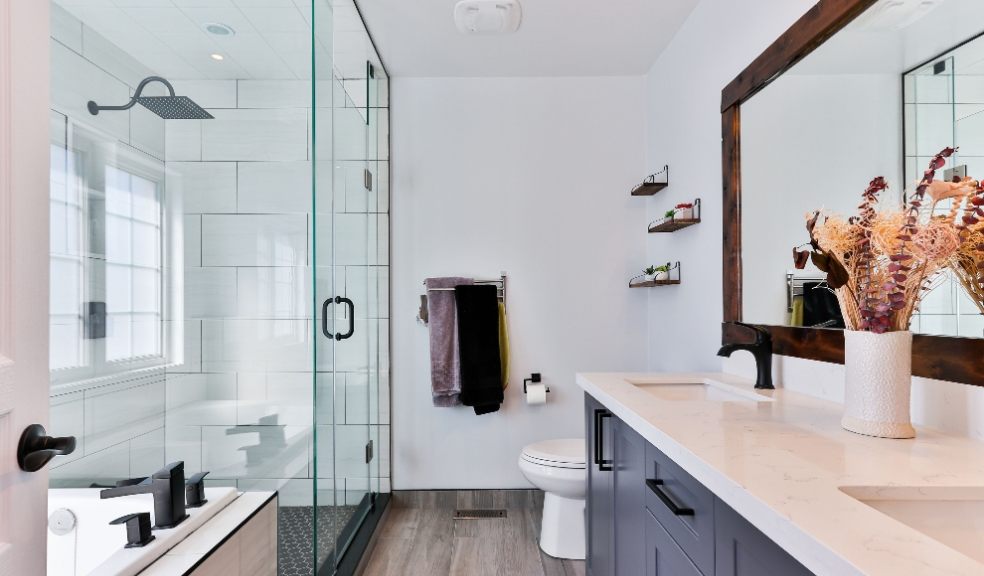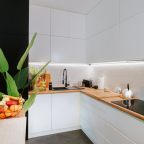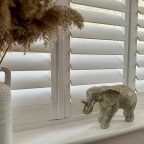
Six practical tips to make your bathroom eco-friendly
The bathroom might be one of the smallest rooms in the home but it can be worst for water usage and excessive plastic packaging. Experts share top tips on how to make greener choices to reduce your carbon footprint – and save you money in the long term!
Showers, toilets, baths and bathroom sinks are collectively responsible for more than two-thirds (68%) of a household’s average water usage.
Then, when you take into account the amount of plastic packaging we accumulate through non-refillable bottles of shampoo, conditioners, body washes and other products along with toilet paper wrapped in plastic – that adds up to a lot of waste.
But the good news is that the bathroom is one of the first rooms in the house you can make those small, easy changes in, to start reducing your waste and getting into greener habits around the rest of the home. It’s even more important to be making these little changes in the home, following research, conducted by Sanctuary Bathrooms, that uncovered the areas around the UK and the rest of Europe that will experience the worst water stress levels by 2040.
The experts at bathroom specialists, Sanctuary Bathrooms and limescale specialists, Halcyan Water Conditioners, share how to make your bathroom more environmentally friendly in six easy steps:
How do I make my bathroom more eco-friendly?
Step 1: Start shopping zero waste/refillable
This is the first and easiest step you can take. Once your current products run out, start replacing them with packaging-free soaps, shampoo bars, and facial cleansing bars or keep your bottles and start taking them to re-fill stores. If you use cotton pads to remove make-up, consider investing in re-usable and washable ones instead. Before you know it, you’ll start noticing the contents of your bathroom bin going down!
Step 2: A touch of green, literally!
Bathrooms can be good environments for plants because they provide a lot of moisture. Showers provide misting and humidity that many low-maintenance plants such as air plants, ferns and bamboo require to thrive. Air purifying plants such as spider plants, peace lily’s, aloe vera and snake plants will actively improve the purity of the air in your bathroom and help cut down on mould, meaning less harsh chemicals needed for cleaning.
Step 3: Start using water wisely
Next, start becoming more mindful about when and how you’re using water within the bathroom. James Roberts, Director at Sanctuary Bathrooms, says, “Many people may be unaware of the amount of water they use in a day. For example, letting the tap run for a minute can waste up to 6 litres of water! Turn the tap off while you’re brushing your teeth, washing your face, and applying soap to your hands. Likewise, turn the shower head off in between shampooing; if you leave it on to warm up at the start, save that water in a bucket for cleaning the bathroom afterwards.
“The biggest one is to only flush necessary items down the toilet. You might use toilet paper to blow your nose and flush it rather than dispose of it in a bin. But without thinking, you’re wasting water that could have been saved. Particularly if you’re using a dual flush system and pressing the ‘full flush’ button.
“Not only is conserving water beneficial to reducing your carbon footprint and being more environmentally friendly but it will also lower your water bills, meaning you save money!”
Step 4: Upgrade your shower head
When you start looking at the items in your bathroom and how they’re functioning, you can start to see where you might be wasting water without even knowing it! According to James, upgrading your leaky shower head to a low-flow version with high pressure, can help. He says, “the benefits of this mean not compromising your existing shower, while saving water usage and saving money. A short shower (2-3 minutes) with an efficient shower head will use less water than a bath (which is around 80 litres)1 and changing your shower head could save up to 40% of water used.”
Step 5: Tackle limescale
If you live in a hard water area, you are more susceptible to limescale. But according to Samantha Mant, CEO at Halcyan Water Conditioners a lesser known fact is “that limescale build-up significantly reduces the efficiency of your boiler, so when you take a shower, you could be using up to 25% more energy to heat the water than is necessary – adding to increasing bills! Limescale can also build up on taps and showerheads leaving a crusty residue which is difficult to clean off without harsh chemicals, which are then washed down the drain and into the watercourse – which is not good for the environment.”
Invest in treatments to prevent future limescale build-up and reduce limescale already present in the home. You can also soak an old cloth in lemon juice and wrap it around your taps or leave your showerhead to soak in a bowl of white vinegar overnight.
Step 6: Replace your toilet
This will be an investment – but there are many eco-friendly options to choose from, to make your toilet more efficient. “Dual flush toilets have a split flush function button which gives you the choice of how much water to use. Low-flow and rimless toilets also use less water and some even feature a coating that makes them less prone to bacteria and easier to clean,” says James.













